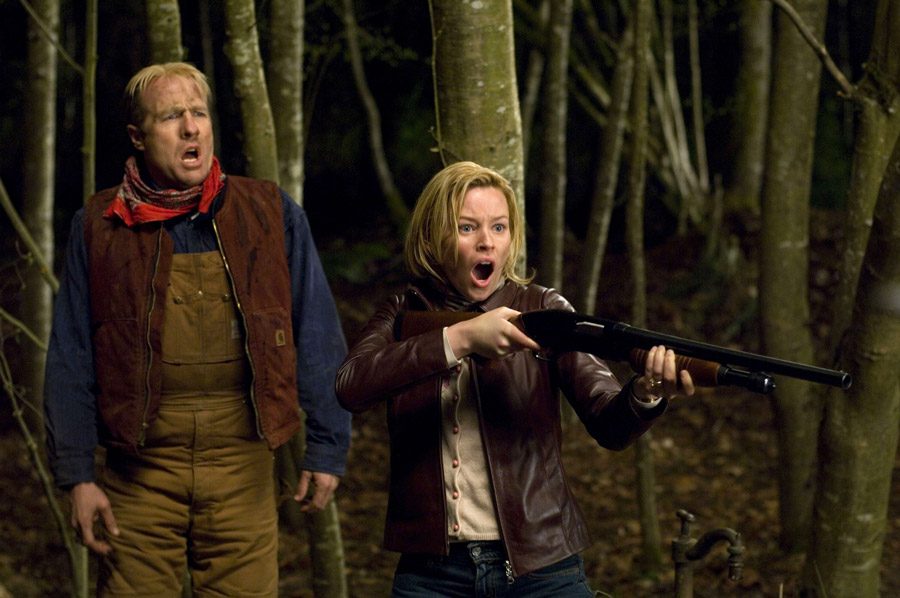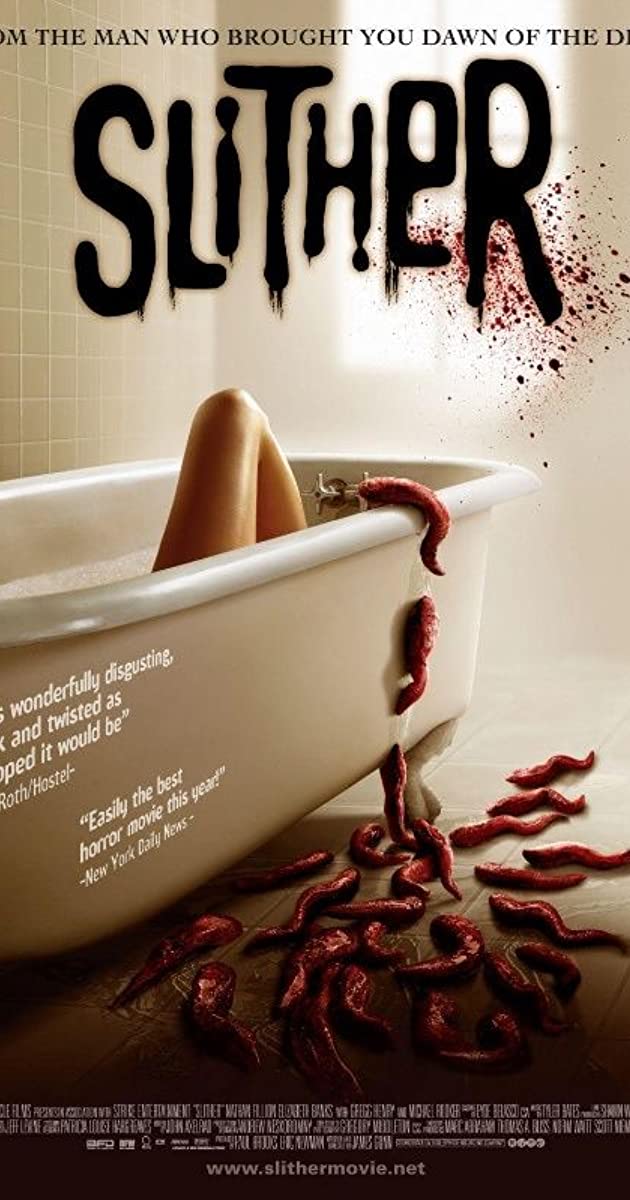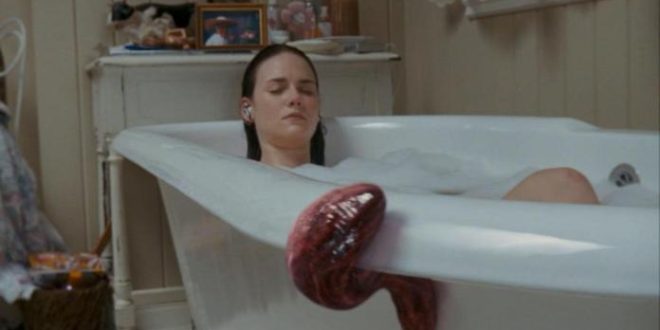Looking back through James Gunn’s carrier, his trajectory is truly unique. He started out as a volunteer with Troma, eventually becoming a writer for projects like Terror Firmer and Tromeo & Juliet, then moving on to major studio writing for projects like the live action Scooby-Doo films and Zack Snyder’s Dawn of the Dead remake before getting his big directorial break here, with Slither. With all of that being so formative, and this movie being all about messy transformation, I’d call the early stuff the larval stage of his career. The studio writing is the chrysalis stage of Gunn’s profession, and by the time we hit Slither, we finally get to see the start of the hilarious, heartfelt, and gross butterfly we all know and love.
There are still signs there of his past—a lot of slime and bodily fluid and immature jokes for sure—but beneath all that, we see heart and a twisted yet sincere sentimentality on top of all the horror: tired, broken people coming together to fight for something they find worthwhile. These are aspects he would also use in films like Super and the Guardians of the Galaxy franchise.
Slither also shows a lot of frequent Gunn collaborators; Nathan Fillion, Elizabeth Banks, and Michael Rooker are the primary leads in Slither, and they go on to feature in several of the filmmaker’s projects going forward. In my opinion, the best parts of the film come from the latter two and their twisted dynamic. Rooker’s Grant Grant is a cheating and manipulative horndog even before he gets mutated by an alien, but Banks’ Starla has a deep seated fear that she couldn’t do or find better, so she stays and does everything she can to please a man who doesn’t really see her as a person anymore. The film takes an especially wild twist once Rooker starts mutating, and he introduces the aliens to the concept of love, something entirely foreign to them, and they amplify his long repressed feelings to the nth degree, all while turning him into something that looks like Cthulhu’s lunch.

Slither is also a bit of a smorgasbord for horror fans. The film’s concept was originally considered to be similar to Night of the Creeps upon release by many critics, but Gunn has come out since to say it is actually inspired by early Cronenberg like Shivers and The Brood and Junji Ito’s Uzumaki. I find those similarities easier to see, personally. Gregg Henry, another Gunn staple (you may recognize him as Star-Lord’s Grandpa), plays a greedy mayor who just happens to be named after not one, but two Kurt Russell roles in John Carpenter films!
Finally, I want to talk about one last part of the film, the imagery. Gunn seems to be going for some political commentary with this story. In a time where small town values and conservatism were being fetishized by American media (just listen to any country album from the time period), Gunn made sure to show the frank, ugly side. Small towns are insular and can get caught in gossip spirals. Gunn focuses on dirt, meat, slime, and decay from within, whether from alcoholism, tobacco damages, societal expectations, or alien slugs.

Overall, Slither may not be as strong as his later films, at times it may be tonally uneven and goofy, but there’s still some grisly grody grindhouse-y fare here. In my opinion, that’s okay. Gunn is on a consistent learning process to advance and refine his skills, getting a little better every time. I definitely recommend giving Slither a chance, especially today, on its 15th anniversary!
 PopHorror Let's Get Scared
PopHorror Let's Get Scared




